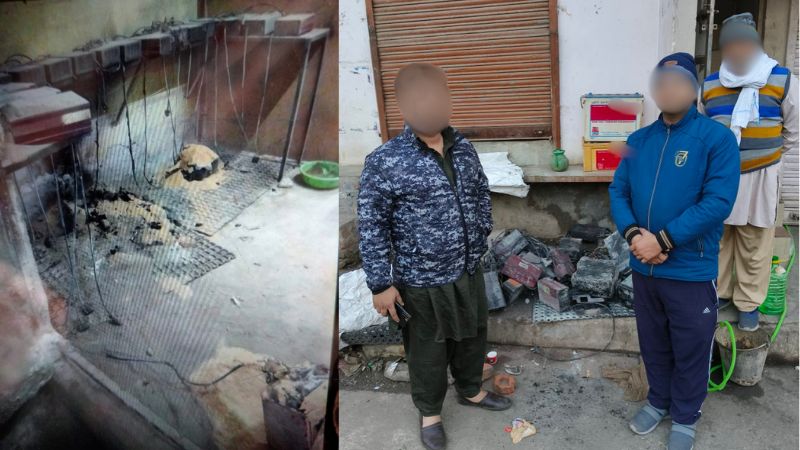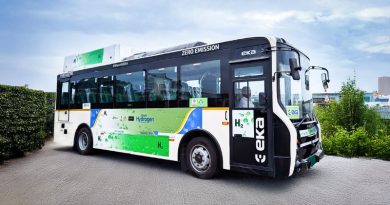Concerns and challenges in running a battery-swapping station as a partner operator
The authors of this article have been running a swapping station with 50 batteries in a UP town for the last 9 months with one of India’s prominent battery-swapping solutions providers. They realised that given the current operating conditions, scale of operations and profit margins, recovering the initial investment and making a sustainable profit as a swap point operator is challenging. Operational discrepancies and some industry malpractices are also a concern.
Through this article, the authors aim to raise awareness about the issues they encountered while running their own swapping business. They hope to provide insights and learnings to potential entrepreneurs who are considering entering this industry so that they can be better prepared for these challenges.
Model (of a particular battery swapping start-up):
- Initial Investment: INR 8,75,000 for a 25-pair station, with INR 2,50,000 as security and the remaining as franchise cost for a 3-year term.
- Revenue Model: INR 150 for the first swap of the day and INR 70 for subsequent swaps. The station operator’s share in this fee is INR 55. The operator’s share is expected to cover shop rent, electricity bills, and staff salaries, given the 12-hour daily operation.
- Swap Count: Initially, the company promised at least 100 swaps daily. However, we haven’t achieved 100+ swaps for any single day. The company also opened 4 new charging points near our station, significantly dropping the daily swap count to 40.
- Expected vs Realised Profit Per Swap: INR 30 per swap as per discussion with the company. However, after paying the shop rent, electricity and staff salaries, the actual per-swap profit is only INR 10.
Safety and Security Concerns:
- Congestion – The stations are often located in residential areas. The minimum space requirement of 200 sq.ft for station setup leads to the opening of stations in densely populated neighbourhoods. The allocation of only 200 sq. ft for 25 pairs of batteries and a Driver Help Center leads to overcrowding and potential safety hazards. Including additional personnel and more batteries than allocated may further compound safety concerns.
- Monthly targets – The swapping company exerts pressure on contractors to achieve monthly targets, which sometimes results in the inclusion of damaged rickshaws in their network. These damaged vehicles carry the risk of damaging the batteries, escalating the fire risk and posing a safety threat to both the swap stations and the surrounding areas.
- Fire incidents: There are frequent incidents of fire – at least 1 fire incident happens every month in the network of battery swapping solution provider. There are multiple reasons for this, including damaged vehicles, damaged batteries and lack of proper safety measures at the swap stations.

- The company provides no insurance coverage for the swap station or the operator, exposing both to potential financial liabilities.
Malpractices by ground-level staff affect the overall integrity of operations:
- The company staff is some times involved in unfair practices such as owning e-rickshaws on the network and partnering with station operators who, in turn, rent out these rickshaws to different E-Rickshaw drivers.
- Since the first swap is priced higher than all subsequent swaps, the fleet operators unethically partner with the ground staff of the battery swapping company and map multiple batteries to one vehicle. While on record, one vehicle is doing multiple swaps, in reality, the additional battery swaps are first-time swaps for the remaining fleet of the operator. This allows the fleet operator to get battery swaps at a significantly reduced price, and the swapping company’s ground staff is able to fulfil his assigned target in a relatively easier manner. This results in a loss of revenue for the battery swapping company and also presents false battery utilization data on the network.
- The swapping company sells battery subscriptions to e-rickshaw owners. By process, the company’s staff is required to ensure that the E-rickshaw is in the right state of health before taking them on to the network. However, given the lack of monitoring systems and accountability, the company’s staff sometimes take favours from the drivers or some referral money from the partner to overlook all the required conditions. In our estimate, approximately 50% of such retrofitted e-rickshaws are not properly checked before allowing to operate on the network.
We hope that this write-up prompts the battery swapping company to pay necessary attention to these pressing issues that impact their network partners as well as the industry on the whole. We also aim to raise necessary awareness among partner operators to be better prepared before investing in the business.
Subscribe today for free and stay on top of latest developments in EV domain.






